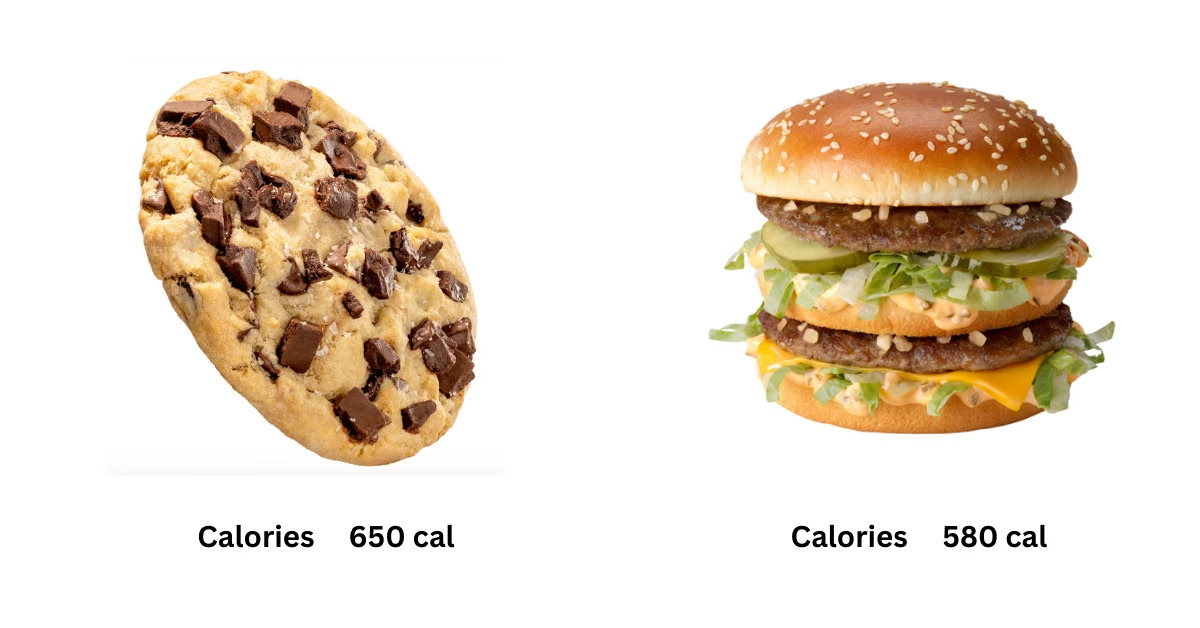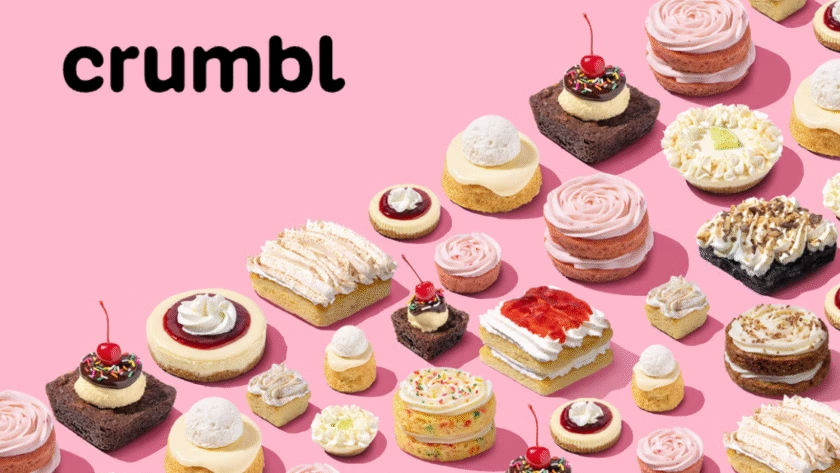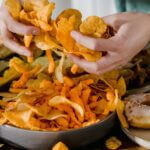Crumbl Cookies has mastered the art of viral desserts with their rotating weekly flavors, from Milk Chocolate Chip Mondays to elaborate concoctions like Raspberry Cupcake and S’mores Skillet.
Their social media presence is as carefully crafted as their treats, with unboxing videos garnering millions of views on TikTok and Instagram.
But beneath the picture-perfect presentation and clever marketing lies a nutritional reality that might make you think twice before devouring that oversized cookie solo.
The Sweet Truth: Nutritional Breakdown of Crumbl Cookies

While Crumbl’s rotating menu keeps customers coming back weekly for new flavors, the nutritional content remains consistently concerning.
A single Crumbl cookie can pack a staggering punch, as many varieties exceed 800 calories and contain over 60 grams of sugar per serving.
To put this in perspective, that’s more calories than a Big Mac (580 calories) and more sugar than you’d find in two standard-sized Snickers bars.
Sugar Shock: One Crumbl Cookie contains approximately 2-3 days’ worth of added sugar based on FDA guidelines (which recommend no more than 25g daily for women and 36g for men).
The chocolate chip cookie, often considered one of their “lighter” options, still contains around 650 calories and 50 grams of sugar.
Their more elaborate creations like the Cinnamon Roll Cheesecake or Raspberry Cupcake cookies can soar well beyond these numbers, especially with their generous layers of cream cheese frosting and sweet toppings.
Even more concerning is how these numbers compare to other desserts we typically consider indulgent. A slice of Cheesecake Factory cheesecake averages 400-500 calories, meaning one Crumbl cookie can easily surpass what most would consider an already decadent dessert option.

Registered dietitian Sarah Johnson notes, “What makes these cookies particularly concerning from a nutritional standpoint isn’t just the calories, but the combination of refined sugars, saturated fats, and large portion sizes—it’s essentially a perfect storm for blood sugar spikes followed by crashes.”
The Portion Illusion: When “Shareable” Becomes Solo

Size comparison: Crumbl Cookie vs. standard cookie portion
Crumbl’s marketing brilliantly positions their cookies as “shareable,” with their signature pink boxes designed to hold four or six massive cookies.
This framing suggests these treats are meant to be divided among friends or family. Yet in practice, many customers consume an entire cookie in one sitting, a fact evidenced by countless social media posts showing individual consumption.
The psychology behind this is clever: by marketing cookies as shareable, Crumbl creates a perception that indulging in a whole cookie isn’t excessive.
After all, you’re just enjoying your portion from the box. But when that “portion” contains nearly half your daily caloric needs and several days’ worth of sugar, the health implications become significant.
“A cookie this size triggers significant blood sugar spikes and crashes, which can lead to increased hunger and cravings later. Most people don’t realize they’re essentially eating the equivalent of 3-4 regular cookies in one sitting.”
The size itself creates another psychological effect: when food portions appear larger than standard, our brains often fail to register the actual amount we’re consuming.
This phenomenon, known as portion distortion, makes it difficult to accurately gauge how much we’re really eating when faced with oversized treats like Crumbl’s offerings.
Beyond the Sugar Rush: Health Impact of Regular Indulgence
The weekly rotation of Crumbl flavors creates a powerful marketing hook; there’s always something new to try, and the fear of missing out (FOMO) drives customers to return regularly.
This business model brilliantly encourages repeat visits, but it also normalizes frequent consumption of these high-calorie, high-sugar treats.
Regular consumption of foods high in added sugars and refined carbohydrates has well-documented health effects.
In the short term, the dramatic blood sugar spikes and subsequent crashes can lead to fatigue, irritability, and increased hunger.
Over time, this pattern can contribute to insulin resistance, weight gain, and increased risk of type 2 diabetes.
Short-term Effects
- Energy crashes 1-2 hours after consumption
- Increased hunger and cravings
- Potential headaches and mood swings
- Temporary inflammation response
Long-term Concerns
- Potential weight gain with regular consumption
- Increased risk of insulin resistance
- Higher risk of type 2 diabetes
- Contribution to cardiovascular issues
Dr. Michael Rodriguez, endocrinologist, explains: “The occasional treat isn’t the issue. The problem arises when these massive sugar bombs become a weekly habit. Your body simply isn’t designed to handle that level of sugar load repeatedly without consequences.”
The weekly menu rotation also creates a cycle of anticipation and reward that can trigger addictive patterns in susceptible individuals.
Sugar activates similar reward pathways in the brain as certain addictive substances, making it easy to fall into habitual consumption patterns, especially when combined with the social media hype surrounding each week’s new flavors.
Pretty in Pink: Marketing Magic vs. Nutritional Reality

The contrast: Social media presentation vs. nutritional facts
Crumbl’s marketing strategy is undeniably brilliant. Their distinctive pink boxes, perfectly styled cookies, and strategic social media presence have created a brand that transcends mere dessert to become a cultural phenomenon.
Each Monday, fans eagerly await the announcement of the week’s flavors, with TikTok and Instagram exploding with unboxing videos and taste tests.
What’s notably absent from these viral videos and carefully curated posts? Any mention of nutritional content.
You won’t find calorie counts or sugar content prominently displayed on their social media or even easily accessible on their website.
This strategic omission allows customers to focus on the experience and aesthetics rather than the nutritional impact.

Behind the sweetness: A closer look at Crumbl’s ingredient list
The ingredient lists reveal another layer of concern. Beyond the obvious sugar content, many Crumbl varieties contain artificial flavors, food dyes, and preservatives.
The Raspberry Cupcake cookie, for instance, gets its vibrant pink color not from actual raspberries but from Red #40, a controversial food dye that some studies have linked to behavioral issues in children.
“Food marketing today is designed to highlight experience and emotion while downplaying nutritional realities. Crumbl has mastered this approach, creating a product that people connect with emotionally through social sharing, limited-time offerings, and aesthetic appeal.”
The company’s influencer strategy further amplifies this effect. By partnering with content creators who showcase the unboxing experience and first-bite reactions, they keep the focus squarely on pleasure and aesthetics rather than health considerations.
These unboxing videos rarely show nutrition labels or discuss the caloric impact of consuming these oversized treats.
View Crumbl’s complete nutrition information on their official site: https://crumblcookies.com/nutrition
Finding Balance: How to Enjoy Crumbl Mindfully

Sharing is caring: Enjoying Crumbl as intended, with friends
Despite the nutritional concerns, it’s undeniable that Crumbl Cookies offers a delicious product that brings joy to many.
The key is finding balance, enjoying these treats mindfully rather than making them a regular habit.
Here are practical strategies for having your cookie and eating it too:
Share Authentically
Embrace Crumbl’s “shareable” marketing as intended. Cut cookies into quarters and enjoy with friends or family. You’ll still experience the flavors while consuming a more reasonable portion.
Practice Portion Control
If enjoying solo, cut your cookie into quarters and save the rest for later. Freeze portions for up to a month and reheat briefly in the microwave when the craving strikes.
Make it Special
Rather than a weekly habit, make Crumbl an occasional treat for special occasions. This enhances the enjoyment while limiting the health impact.
Many food bloggers have created modified versions of popular Crumbl flavors with reduced sugar, whole-grain flour, and natural ingredients.
These alternatives typically contain 300-400 calories and significantly less sugar while still satisfying the craving for something sweet.

Mindful enjoyment: Savoring a reasonable portion
The Sweet Spot: Balance and Awareness
Crumbl Cookies has undeniably revolutionized the dessert industry with their innovative marketing, rotating menu, and social media savvy.
Their success story offers valuable lessons in brand building and customer engagement. However, as consumers, we benefit from looking beyond the pretty pink box to make informed choices about what we eat and how often.
The goal isn’t to demonize these treats or suggest they should never be enjoyed. Rather, it’s about raising awareness of what we’re actually consuming, so we can make choices that align with our overall health goals.
Whether you choose to share your Crumbl with friends, save portions for later, or try your hand at healthier homemade versions, the key is to enjoy it mindfully rather than mindlessly.
By understanding the nutritional reality behind these viral cookies, we can strike a balance between enjoyment and moderation.
After all, desserts are meant to bring pleasure, and being aware of what we’re eating only enhances that experience by allowing us to savor every bite without the guilt that often accompanies it.
How can I make Crumbl Cookies healthier?
While you can’t change Crumbl’s recipe, you can control how you enjoy their cookies. Share with friends, cut into smaller portions, or balance your meal with protein and fiber from other meals that day to minimize blood sugar spikes. For those with a serious sweet tooth but concerned about nutrition, consider making healthier dupes at home.
Are some Crumbl flavors healthier than others?
Generally, simpler flavors like their semi-sweet chocolate chunk tend to have slightly lower sugar content than elaborate frosted varieties. However, all Crumbl cookies should be considered an indulgence rather than a nutritious choice.




